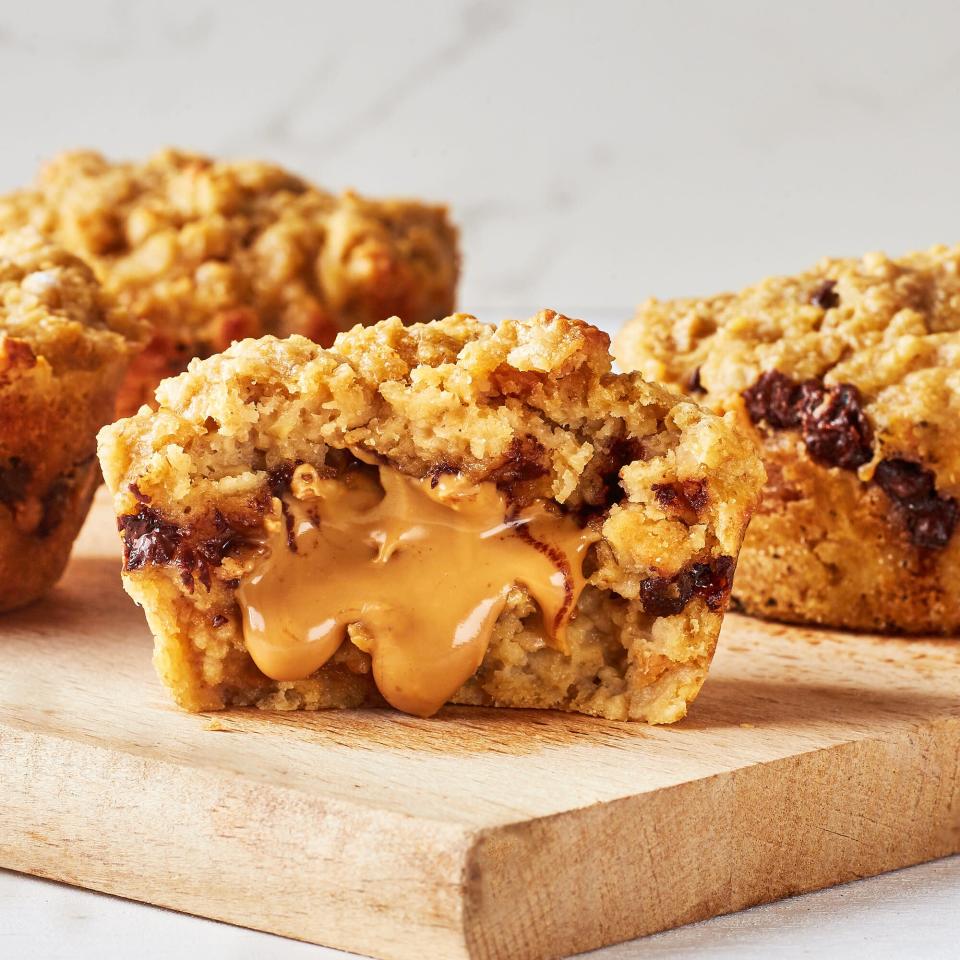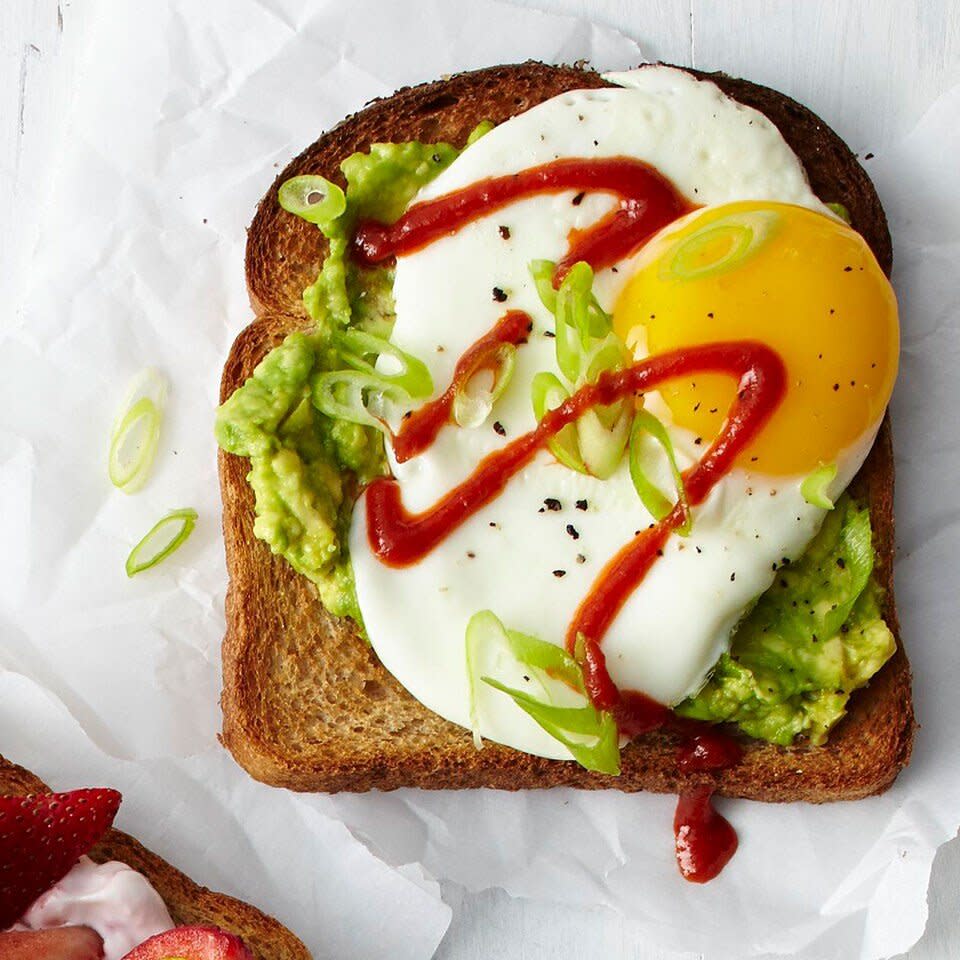
7 Ways to Add 10 Grams of Healthy Fat to Your Meals
Table of Contents

Jen Causey
Fats have had an unfortunately controversial reputation when it comes to nutrition and health. Back in the 90’s, people were encouraged to avoid fat whenever they could. Since the mid 2000s, several trendy diets such as the keto diet encourage ample fat intake. As more research comes out, it’s becoming more and more clear that having a balanced eating pattern that includes healthy fats, proteins and carbohydrates is key to the best health outcomes. In particular, fats are an important macronutrient that helps us protect our heart health, reduce our risk of cancer and cognitive decline and feel more satisfied from our meals. But the kind of fats you choose matters, too.
Pictured Recipe: Creamy Avocado Pasta
There are two main types of fats in our diets: saturated and unsaturated fats. Saturated fats include animal sources such as butter, lard, dairy and red meats. These types of fats are stiffer and less flexible, meaning they can be more apt to get stuck in our arteries and can be harder on our hearts. Unsaturated fats include plant-based sources, such as olive oil, vegetable oils, nuts, seeds and avocados and can also be found in fatty fish such as salmon and tuna. These types of fats have been found to be protective to our hearts and overall health. This list is meant to help you add healthy sources of fats to your meals, primarily from unsaturated sources.
7 Ways to Add 10 Grams of Healthy Fat to Your Meals
The 2020-2025 Dietary Guidelines for Americans recommends having 20-35% of daily calories come from fat, focusing on nutritious sources and limiting saturated fat intake. Twenty-five percent of a 2,000 calorie pattern would be 500 calories or roughly 56 grams of fat per day. With each option, you’ll add 10 grams of healthy fats to your meals and will help to meet close to 20% your needs deliciously.
1. Drizzle on olive oil
About 2 teaspoons of olive oil = 9-10g
Especially if you follow the Mediterranean diet, you might be familiar with the health benefits of olive oil. This versatile oil packs impressive anti-inflammatory compounds, supports healthy aging and can keep our hearts functioning at their best. Whether you drizzle some on top of your salad or grain bowl or use it to saute some vegetables, adding in two teaspoons of olive oil can help you up your healthy unsaturated fat intake by 10 grams. Other oils that are high in unsaturated fats include vegetable oil, canola oil, avocado oil and sunflower.

Ali Redmond
Recipe image: Breakfast Peanut Butter-Chocolate Chip Oatmeal Cakes
2. Add nut butter or nuts
About 4 teaspoons nut butter or ½ ounce (7 pieces) nuts = 10 g
Add some crunch (or creaminess) to your next meal by mixing in some nuts or nut butter. However, not all nuts are the same. Each variety has a unique flavor profile and slightly different nutritional characteristics, but all are excellent sources of healthy fats. And a small portion of these energy- and nutrient-dense foods can go a long way: just a half ounce of nuts (or 4 teaspoons of nut butter) contributes 10 grams of unsaturated fats. Nuts are also a great source of fiber, protein and nutrients like magnesium, vitamin E and folate. They are also incredibly versatile, and can be used in everything from baked goods to soup. Just be sure to be allergy-conscious when serving or enjoying nuts in your meals.
3. Melt some cheese
1 ounce (1 slice) of cheese = 10g
While cheese is a source of saturated fat, there are several reasons it can be a healthy addition to your meals. It is a rich source of essential nutrients including protein, calcium, phosphorus and zinc. Not to mention, it’s been shown to help lower diabetes and heart disease risk, improve strength and contribute to longevity to boot. And just one ounce (about the size of a domino or a regular deli slice) can help you add 10 grams of healthy fat to your plate. Sprinkle it on top of your casseroles and salads or add a slice to your next sandwich.

Recipe image: Avocado-Egg Toast
4. Spread some avocado
One third of an avocado = 10g
There are lots of reasons to love avocados. They are flavorful, deliciously creamy and provide a host of health benefits. They can promote skin and eye health, lower cholesterol and boost nutrient absorption, to name a few. Plus, the combination of fiber and heart-healthy fats in avocados can help you feel satisfied for longer from your meal. Try adding one-third of an avocado to your next sandwich, salad, toast, bowl, taco or smoothie.
5. Top with canned fish
About 5 ounces of oil-packed tuna or 3 ounces of oil-packed sardines = 10g fat
Seafood is one of the most nutritious protein sources around, but buying it fresh can get expensive. Instead, opt for canned fish to add healthy fat, flavor and nutrition to your meals in a budget-friendly way. It’s also a great source of omega-3 fatty acids, an important type of unsaturated fat that can help improve joint health, reduce inflammation and protect healthy cognitive function. Plus, cans of fish like tuna or sardines can cost less than $1 each and last in your pantry for several months so you can have a healthy meal in a pinch. A little goes a long way, topping your next salad, sandwich or saute with three to five ounces of canned fish can help you add 10 grams of heart-healthy fat.

Brie Passano
Recipe image: Vegetarian Chopped Power Salad with Creamy Cilantro Dressing
6. Sprinkle on seeds
1 ounce (2 tablespoons) chia seeds = 9 g
1 ounce (2 tablespoons) flax seeds = 10g
About 5 teaspoons pumpkin seeds = 10g
Adding a few tablespoons of nutrient-dense seeds to meals throughout your day can help you boost the healthy fat, fiber, protein and nutrients in your eating pattern. They might be a little more expensive up front, but a little goes a long way: chia seeds pack in 5 grams of protein, 10 grams of fiber, 9 grams of healthy fats (5 of which are omega-3s) and ample micronutrients like calcium, iron and more in each one-ounce serving. Whether it’s a crunchy add to a savory salad or to boost the texture of your creamy breakfast bowl, add seeds like chia, pumpkin, flax and more to boost your healthy fat intake.
7. Up the flavor with olives
About 20 olives = 10g
While 20 olives are too many for one sitting, 10 pieces can make your afternoon snack or meal rich in healthy fat. It’s worth noting that olives are higher in sodium (20 olives would equal about 720 milligrams of sodium), so this might not be the best choice for someone who is following a heart-healthy or diabetes-friendly pattern. Try adding a few olives on top of a salad or alongside your next grain bowl to help you add up healthy fat into your eating pattern. Plus, they can add a savory richness to your meals, especially if they are packed in oil.
